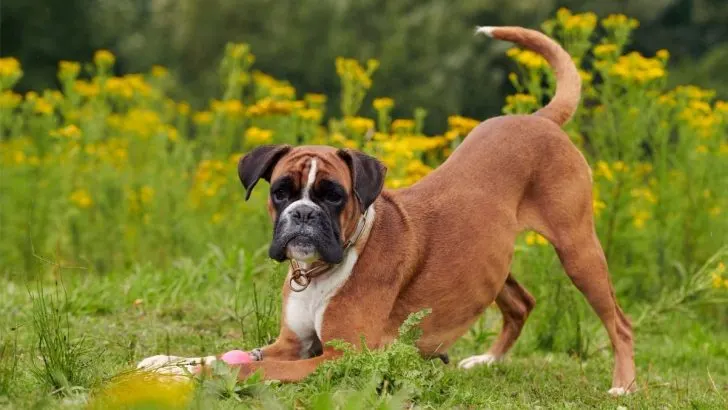Boxers are one of the most distinguishable dog breeds out there – one of the reasons is due to the easily recognizable Boxer colors.
But did you know there are more shades than you might think at first?
Boxers are a very interesting breed that is commonly used as guard dogs and as family pets. While they look dangerous, they can be huge cuddle bugs, which is why they are so beloved by everyone.
At the same time, they have a unique appearance that makes them stand out from the rest.
So, what Boxer colors are out there, and what markings are acceptable? Let’s find out!
Accepted Boxer Colors
First and foremost, it’s important to note that different kennel clubs accept different colors. In other words, a pup that isn’t up to the breed standard in the US, might be entirely acceptable in Europe and up to the UKC or FCI standard.
Still, just to make things more clear, we’ll stick to the American Kennel Club (AKC) for this article.
So, why does it matter whether a color combination is accepted or not?
First and foremost, only dogs in accepted colors can participate in dog shows and conformation rings.
Not only that, but an accepted coat color means that the dog is most likely healthy and purebred, as these colors occur naturally within the breed.
AKC allows only three Boxer colors. These are:
1. Brindle Boxer
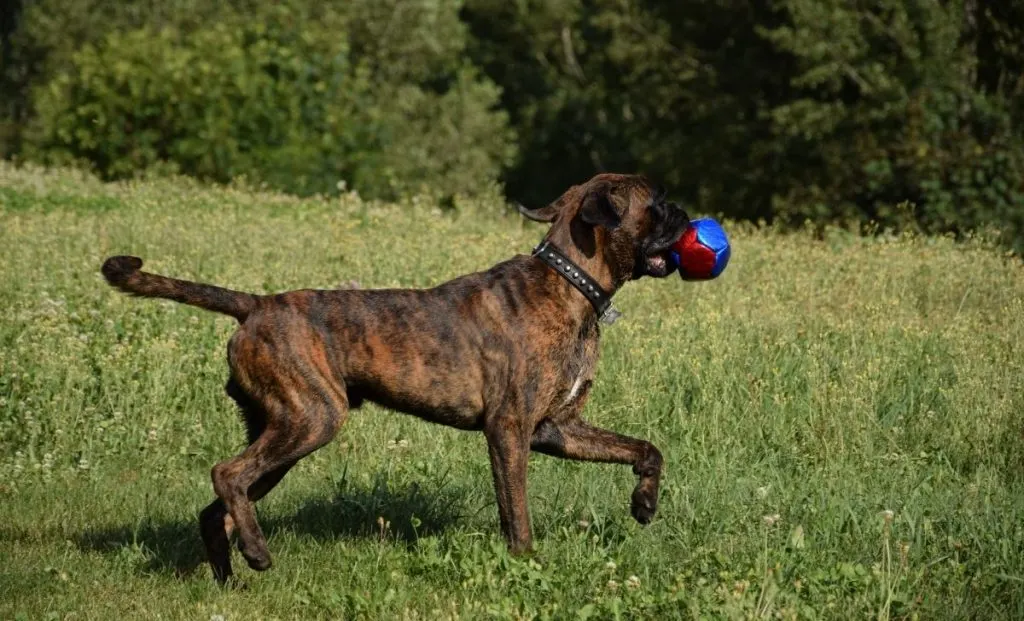
Brindle is one of the most popular Boxer colors out there. It is also one of the well-known American Bully colors.
Do you know those dogs with tiger-like stripes? That’s brindle!
In other words, while brindle is considered a color by AKC and other kennel clubs, it’s debatably a pattern, as it there is a base coat color with darker (or, occasionally, lighter) stripes.
Most brindle Boxer dogs have brown coats and black or dark brown stripes, but some are also fawn with brown stripes.
There are also dark brindle pups that might appear black. However, once you take a closer look, you’ll easily spot the brindling.
2. Fawn Boxer
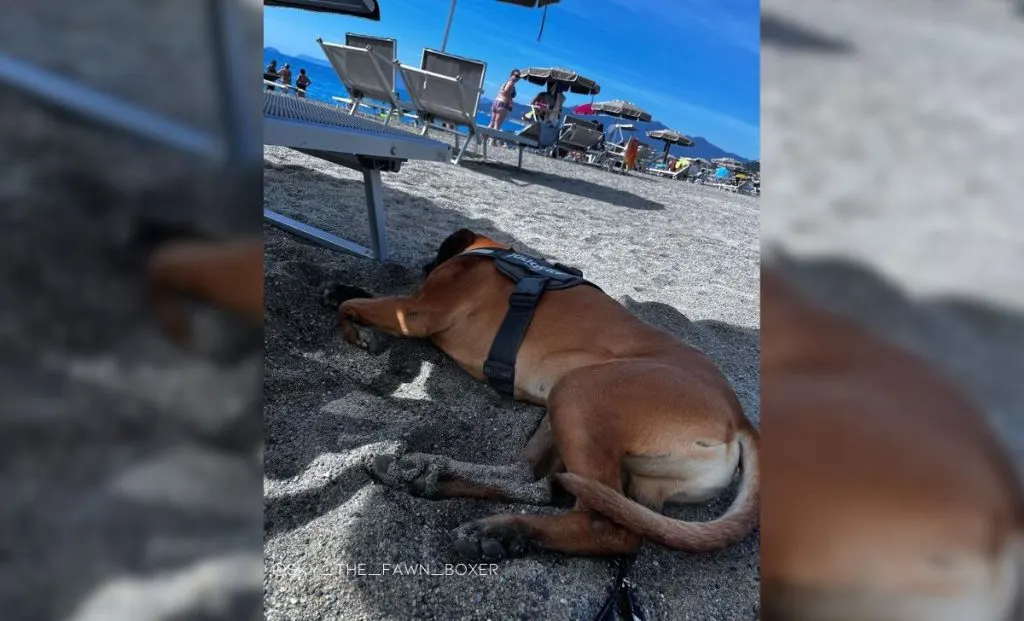
Next to brindle, the color fawn is one of the most common Boxer shades.
In Boxers, fawn is a light color that resembles the shade of milk chocolate. However, the exact hue can vary from dog to dog.
Some fawn Boxers have a coat color that resembles red, while others are much lighter, almost cream in shade.
All fawn Boxers have a black mask, black nose, paw pads, and eye rims. White markings are also quite common, especially on the dog’s paws, tummy, chest, muzzle, and forehead.
Fawn Boxers with white markings are also known as flashy fawns, as the white seems to be flashing on their bodies.
3. White Boxer

Full white Boxers are the rarest of all accepted coat colors. One of the reasons behind this is that they are not part of the breed standard. In other words, while they are purebred and you can register them with the AKC, they are not suitable for the show ring.
Most white Boxers have at least some tiny marking of color. They often have butterfly noses, but the largest parts of their noses have to be black. Also, they have dark eyes.
It’s important to note that these are not dogs with albinism. Such pups don’t have any pigment, which isn’t the case with white Boxers. They don’t have pink noses or blue eyes. These are simply dogs with white coats.
Unfortunately, some white Boxers might be more prone to certain health issues. The white gene is connected with certain problems, such as deafness.
This is why it’s important to only buy them from reputable dog breeders who will carefully pick the dogs for their breeding programs.
Rare Boxer Colors
If you look at some breeders’ listings, you might see Boxers in a few other ‘rare’ colors that you won’t find being accepted by the AKC or any other kennel club.
Sometimes, these colors belong to one of the three coat colors listed above. They simply vary in shade a bit from the standard hue, so the breeders have given them fancy names to increase their sales.
Other times, these dogs are actually faulty. They either come in colors associated with certain health problems or are crossbred with some similar-looking breed to introduce that specific ‘unique’ coat color to the gene pool.
Either way, most experts would recommend against purchasing these dogs, considering that there’s a reason why these colors are not accepted by the AKC. Of course, you are free to make your own decision and choose a dog of your liking.
Here are some of those rare shades I’ve found:
1. Golden Boxer

Golden Boxer puppies are quite challenging to find. They come in a bright golden color that is typically very shiny, giving these doggos a luxurious appearance.
These pups can be registered as fawn Boxers. However, unlike the typical fawn shade, golden is brighter but deeper than the standard Golden Retriever color, for example.
You can even find golden Boxers with black stripes, although these pups will be registered as brindle Boxers instead of fawn.
Just as is the case with fawn doggies, most of these pups will have a black mask, with a possibility of white markings, as well.
2. Red Boxer
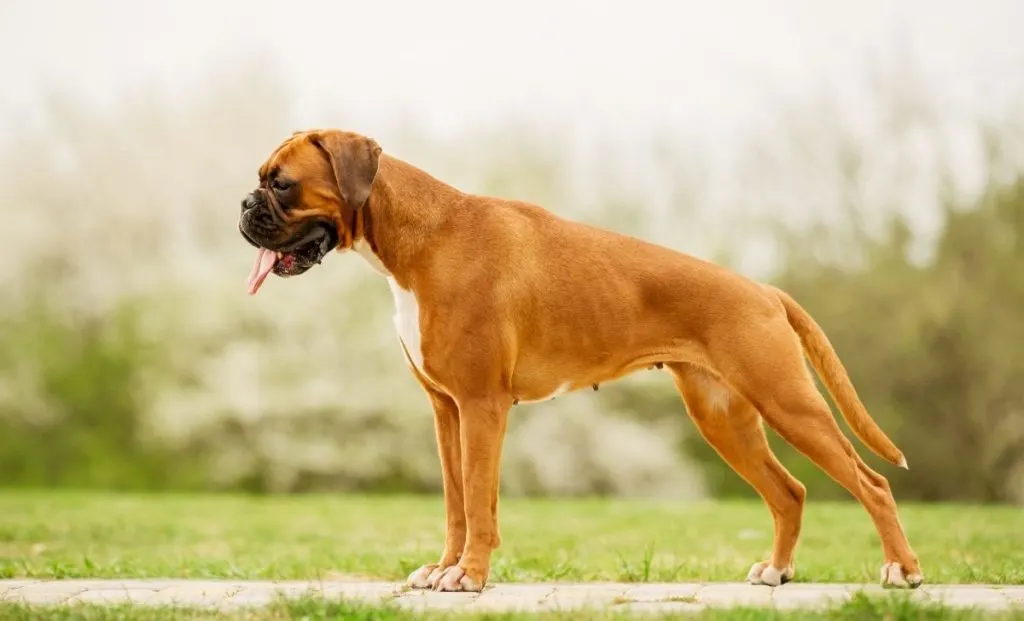
Red Boxers are yet another coat color that can be registered as fawn. The difference is that their shade closely resembles deer red hue rather than milk chocolate.
This is also considered one of the most beautiful and most prized Boxer colors out there. Just look at how gorgeous this dog is!
And a good thing is that these pups are considered purebred, so you don’t need to worry if you notice a breeder selling this particular color.
Red Boxers can also come in flashy fawn, which will only further increase their beauty.
3. Black Boxer

Black Boxers are the most mysterious of all coat colors for this dog. Some people argue whether they really exist, or if they are just a myth.
Sadly, solid black coats aren’t considered standard for the Boxer breed. The gene for black coats doesn’t exist in this breed. Most of these dogs are dark brindles or with some other darker shade base coat that are mistaken for black. You cannot find a purebred black Boxer.
However, it is possible to find dogs that look like Boxers with a black coat. These are usually Boxer mixes being sold as purebred dogs by breeders looking to grab some quick cash.
While these dogs are undoubtedly beautiful, I would advise you to avoid buying them, or any other dog that doesn’t fall within the AKC standard.
While there is nothing wrong with getting a crossbreed, you should get them from the right place and not from someone trying to cheat you into buying a dog who is not what you think it is.
4. Parti-colored Boxer

Parti-colored Boxer is a dog that has more than 1/3 of white in his body. This dog is no longer considered to have white markings, but rather to have a parti pattern – although this can be considered as an entirely new color, as well.
These pups have patches of color distributed on various parts of their bodies. These patches can vary from brindle coats to dark deer, or even medium fawn and golden.
Such distribution gives these pups a rather unique appearance that cannot be confused with any other Boxer color.
Still, this isn’t up to the color breed standard, so keep this in mind when purchasing a parti-colored Boxer. The gene responsible for the parti color is often connected with some health problems, so many dog clubs are against intentional breeding of this shade.
5. Check Boxer

Now, this is a Boxer color you don’t see every day!
This is basically a white Boxer with one single large patch of color on its body. The marking can come in any other Boxer shade, but it’s most commonly brindle or fawn.
The issue is that there is no official breed standard that defines this specific color, which means that the appearance of a dog being sold as a check Boxer can vary.
In general, most check Boxers have at least 1/3 of color on their white coats, but some can have much less. The only important thing is that there shouldn’t be more than one colored marking.
While these pups are not approved by the AKC, they are highly valued, especially if the marking is in some unique shape or location.
6. Seal Boxer

Seal is an extremely rare Boxer shade, and it is found in a few other dog breeds – such as Pitbulls.
In Pitbulls, seal is a mysterious shade that might appear black or dark gray at the first glance. However, once you look at it closely, you’ll see that it has a red or brown shine to it, giving it the appearance of a seal’s coat.
In Boxers, however, while the seal shade does leave the same first impression, it is actually caused by extremely tight pattern stripes. Yes, this dog is actually brindle.
Due to this, some call these dogs the sealed Boxer – as the pattern is known as the sealed brindle.
Call it however you’d like – we can all agree that this color will make any Boxer stand out from the rest!
Accepted Boxer Markings
I have already mentioned the standard brindle striping, parti, and check, which can be considered to be a pattern. But there are several possible markings in this breed. You have probably already seen some of them. Others, however, are much more rare.
Just as is the case with colors, some markings that are not accepted by the AKC might be a part of the UKC or FCI standard, and vice versa.
Still, I’ll only do a run-through of all the markings recognized by the American Kennel Club, as these are colors you’ll most likely find at local breeders.
Here’s what they are:
1. Black Mask
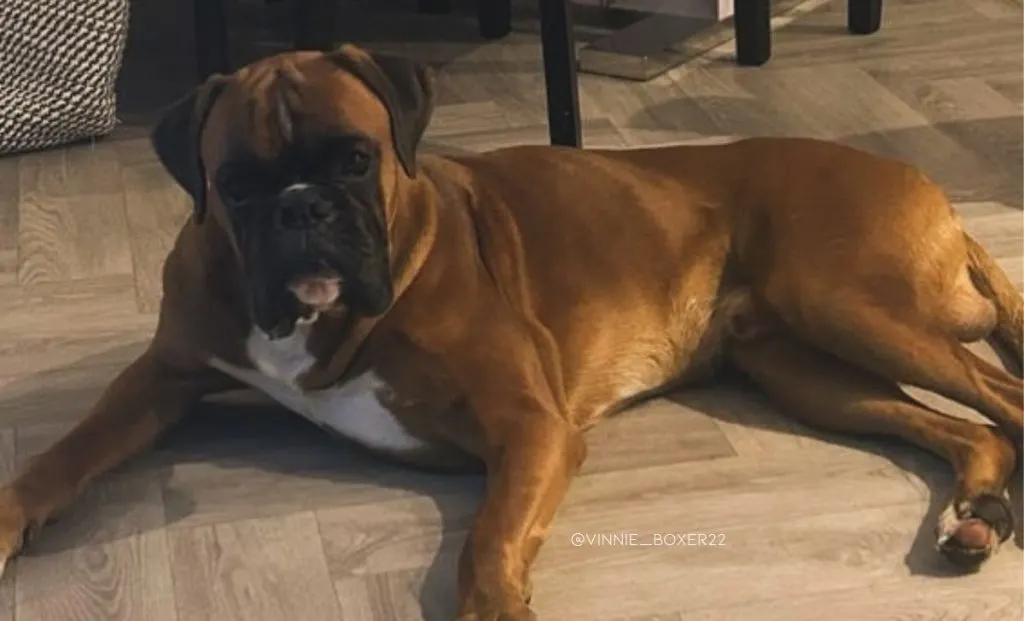
Majority of Boxer dogs have black masks that cover their muzzles, cheeks, the area around their eyes, and sometimes even ears – although this isn’t too noticeable on dogs that have had their ears cropped.
When you think of Boxers, you most likely think of dogs with black masks. This is how common the pattern is.
Even as young puppies, Boxers will still have this pattern!
Only colors that aren’t expected to have it are white Boxers – although the mask itself can be barely noticeable on darker brindle shades.
2. Black Mask, White Markings

While some dogs have only a black mask, most have at least some white markings on their bodies.
I’ve already mentioned flashy fawns, but white marks on the dog’s face can happen in brindles, too.
White markings aren’t just limited to the dog’s face. They are also found on the dog’s chest, underbelly, the inner part of the legs, and sometimes even on the cheeks!
The combination of these two markings give Boxers a stunning appearance that is different from most other similar looking breeds.
3. White Markings
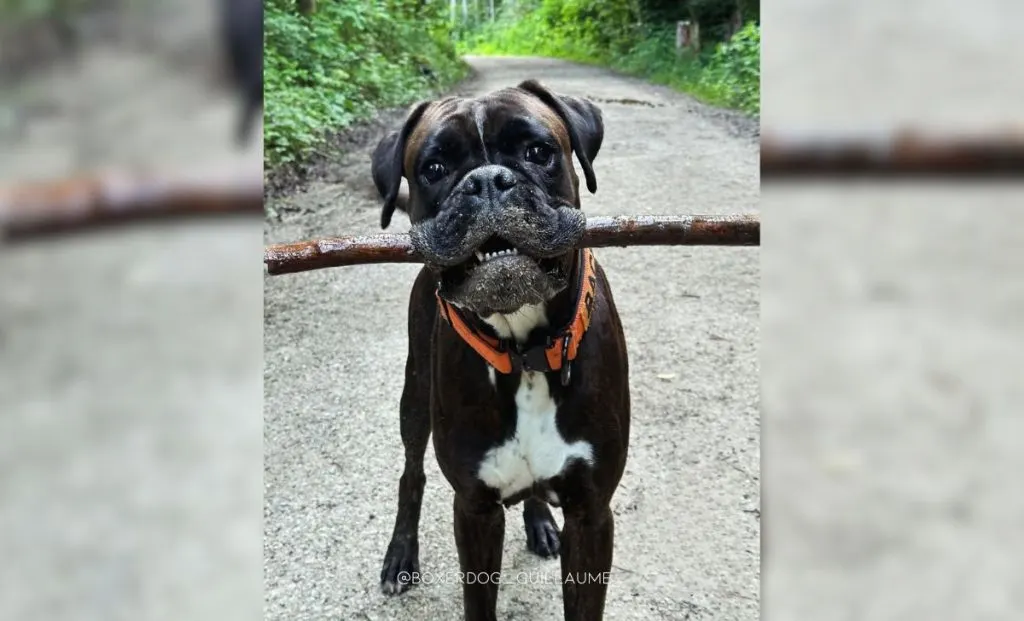
While Boxers come in a wide range of colors, most of them have white markings. Those that don’t are known as plain Boxers.
As mentioned before, white markings are located on the dog’s face, chest, stomach, and the inner thighs. Only the markings that meet the following terms are accepted by the AKC.
In other, unrecognized colors, such as parti or check, the white can cover other portions of the dog’s belly, as well.
Once again, it’s important to know that too much white on a Boxer’s coat can be connected with a weaker health of these pups. Be careful when choosing such a dog over the one that is recognized by the breed standard.
4. Fawn Markings
Fawn markings are recognized by the AKC, but are not part of the breed standard. A single white marking can disqualify your dog from the show ring, but it doesn’t mean that a dog isn’t purebred.
Most of the time, fawn markings are found on fawn dogs. This simply means that there is a fawn mark on the white part of the dog’s body.
Fawn markings can also be found on some unrecognized Boxer colors, such as check or parti – although, in such occasions, the marking isn’t the only cause of disqualification.
These markings are extremely rare. Personally, I have never seen a Boxer with such a pattern, but they can happen.
However, as most breeders will remove such dogs from the breeding programs, they are not a common sight.
5. Brindle Markings
Brindle markings are quite similar to fawn markings, but they are found on brindle Boxers.
This is a patch of brindle color on the white portion of a dog’s coat. If a dog is brindle with white markings or black mask and brindle markings, then the dog can be registered but not participate in dog shows.
However, if found in check or parti dogs, the dog cannot be registered as a purebred.
While extremely rare, brindle markings can also be found on seal and black Boxers (provided that the black Boxer is actually a dark brindle pup). In this occasion, the marking is lighter in color, located on a darker brindle base coat.
Once again, this is one of the rarest Boxer colors and markings, as it is not considered desirable by breeders and dog lovers alike. This is one of the reasons it’s extremely hard to find.
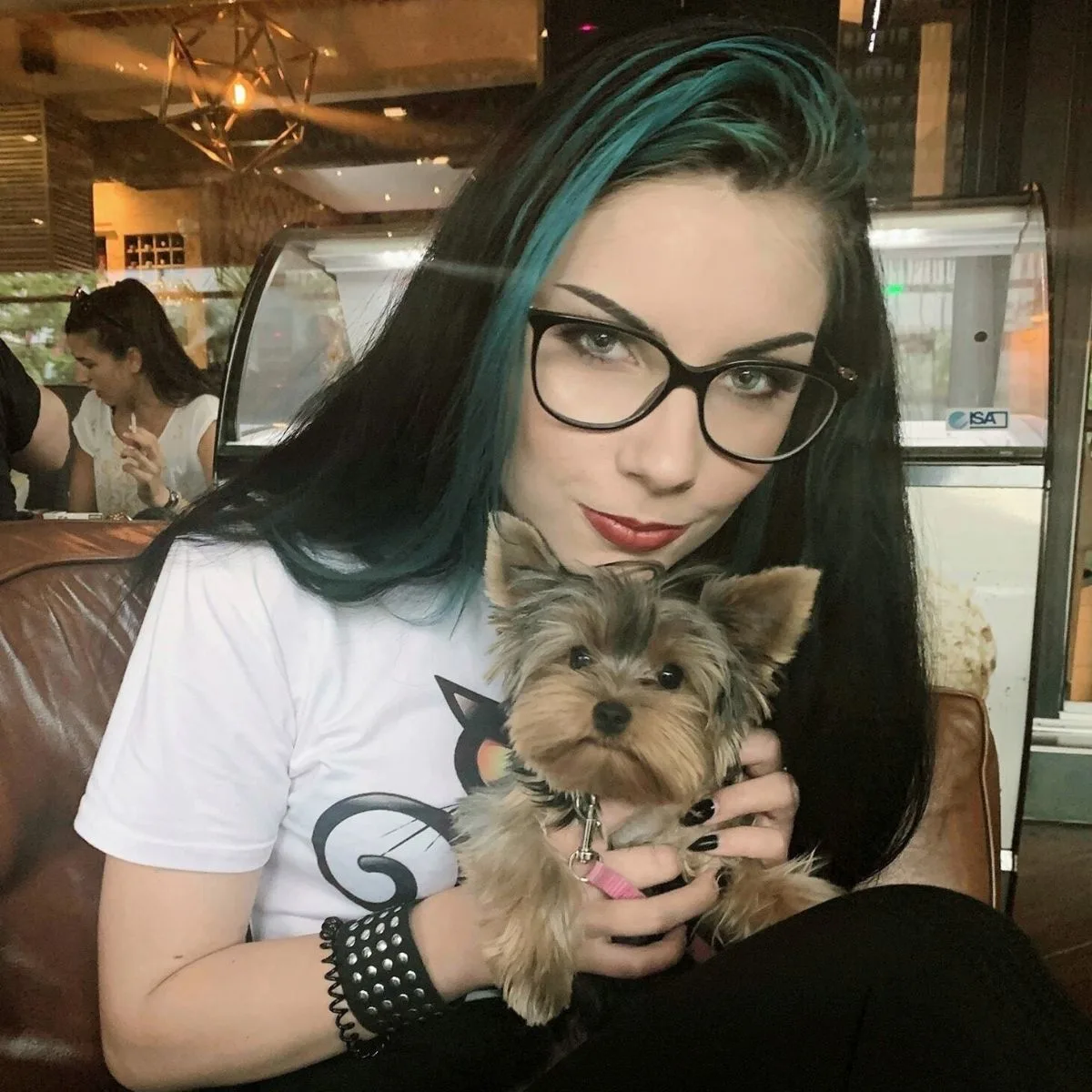
Vanja’s passion for writing started at an early age, which is why she pursued Journalism as her college degree. She can research any topic and find all the information before you bat an eye, which is a great thing for her job but a terrible one for her husband.
Even as a young child, she fell in love with everything fluffy – but dogs have a special place in her heart due to her childhood companion, a Corgie named Archie.
Motivated by her experiences and driven by a desire to give back to her four-legged companions, she spends her free time volunteering at a local dog shelter.
